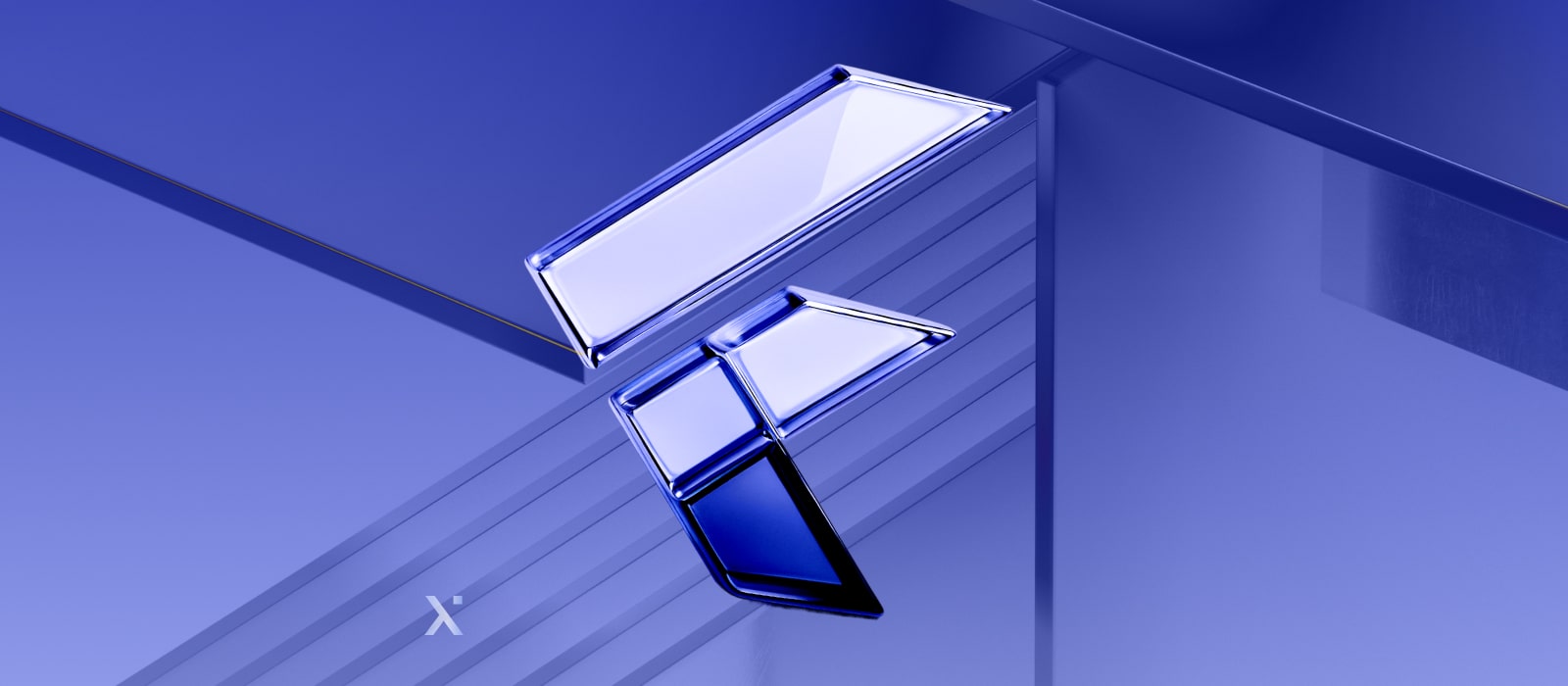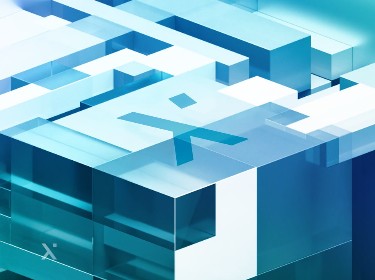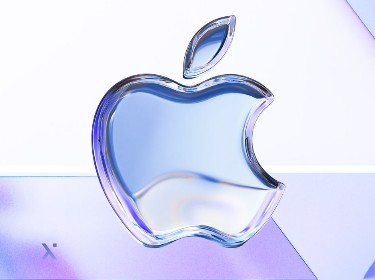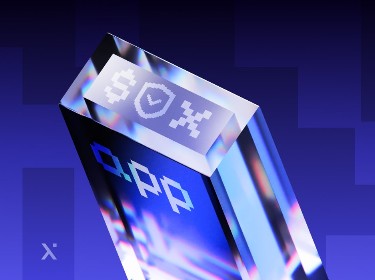The secret of Flutter’s popularity lies in its universal codebase. Developers use it to build native iOS and Android apps fast and efficiently. But how much does Flutter app development cost? And how to find a reliable tech partner to make a big entrance?
“Our goal with Flutter is to fundamentally change the core question from worrying over which platforms to support to a pure focus on what you want to build, ” mentions Michael Thompsen, the product manager at Google, who works on Dart and Flutter, at the Google I/O conference in May 2005. And we know what he means. Flutter is a popular cross-platform app framework that allows developers to create mobile and desktop apps with high performance and intuitive UIs. With Flutter, your apps are compatible with any platform.
Another sphere of Flutter application is its integration with blockchain technologies and smart contracts to create dApps. For example, Flutter serves as the front-end framework for dApps, while smart contracts are written and deployed on blockchains using languages like Solidity. PixelPlex is a dApp development company with more than 12 years of experience in blockchain. Our experts agreed to consult us on the key benefits of the Flutter mobile application development, Flutter pricing, and ways of cost optimization. Let’s dive in.
Why choose Flutter for app development?
30% of new free apps that appear in the App Store are created with the help of the Flutter SDK. Developers continue to choose Flutter for cross-platform app development for a number of reasons. Let’s plunge deeper into the history of Flutter, its features, and its strong sides.
![]()
The evolution of Flutter
- 2015-2016: The origin of Sky
Flutter began its history as a project named “Sky” in 2015. Its aim was to run Dart code at 120 frames per second, which was twice as fast as the standard 60 fps for rendering visuals, animations, and interactions. In 2016, Google introduced the project as Flutter at the Dart Developer Summit. - 2017: Alpha release
Google released the first public alpha version of Flutter, showcasing basic functionality and attracting developer interest. - 2018: 1.0 release
In December 2018, a stable version of Flutter 1.0 was released for iOS and Android apps. The key features appeared like “hot reload” for real-time code updates without losing app state. - 2019: Flutter 1.2
Flutter 1.2 improved stability and widgets and introduced the first preview of web support, expanding Flutter’s reach beyond mobile. - 2021: Flutter 2.0
This one is a major milestone. Flutter 2.0 brought stable web support, expanded platform compatibility (iOS, Android, Windows, macOS, Linux), null safety, and improved rendering capabilities. Flutter became a true cross-platform framework. - 2022-2025: Ongoing enhancements
Subsequent versions introduced support for newer OS features, multi-device debugging, improved UI tools, performance optimizations, and deeper integration for desktop, web, and embedded devices.
Following Flutter’s evolution, we see that it has undergone a serious transformation from a mobile-focused toolkit to a versatile framework for custom web application development services across multiple platforms using a single codebase, trusted by developers worldwide.
Key benefits of Flutter
We’ve come to the most interesting part. Why is Flutter application development so popular? It offers key advantages that businesses and developers benefit from.
- Single codebase for multiple platforms: Flutter lets developers write one codebase for mobile app development services, web, and desktop solutions. Flutter’s code runs seamlessly on iOS, Android, Windows, macOS, and Linux. Compared to building separate native apps with Android application development services or traditional iOS app development, this approach significantly cuts development time and resources. An app becomes available to wider audiences and brings new revenue streams to a business owner.
- High performance: Google’s new Impeller engine helps Flutter apps run animations smoothly and quickly by converting code into native ARM instructions and using graphics tools like Metal and Vulkan. The Dart programming language lets developers build apps for multiple platforms with one codebase. Flutter also uses the Skia graphics engine to render animations fast and smoothly. Together, these technologies make apps feel faster and work well, even on less powerful devices.
- Faster development cycles: Flutter’s “hot reload” feature enables developers to see code changes instantly without full recompilation. This feature accelerates prototyping, debugging, and iteration, and helps companies bring products to market quickly.
- Rich and customizable UI: Flutter includes a vast ecosystem of widgets and packages that allow building beautiful, responsive, and brand-consistent user interfaces adaptable across platforms. Besides, the widgets allow developers to follow platform-specific guidelines. Dynamic interfaces are possible due to easily combined widgets and elements, which create a layered architecture.
- Strong ecosystem and community support: Google and open source contributors actively maintain and expand Flutter’s ecosystem, with tens of thousands of ready-made packages for functions like payments, analytics, and backend integration.
Have an app idea but not sure which platform to choose? Our cross-platform app development team provides solutions for multiple devices and OSs. Check it out
Flutter app development cost in 2025: key numbers
The price depends on multiple factors. We discuss these factors in the next section. Here is a table with some general information about the Flutter app development cost ranges.
| Project type | Estimated cost range (2025) | Timeline | Example features | Example apps |
| Simple | $5,000–$30,000 | 1–2 months | Basic UI, static content, simple forms, no backend integration | Calculator, to-do list |
| Medium complexity | $30,000– $80,000 | 2–5 months | Login, API/database, maps, notifications, custom UI | Restaurant finder, fitness app |
| Complex/ Enterprise | $80,000– $200,000+ | 5–12+ months | Real-time chat, payments, admin panel, integrations, scalability | Banking app, e-commerce app |
What influences Flutter app development cost?
![]()
App complexity and feature set
As in the table above, Flutter app complexity may be basic, medium, or complex. Things like deployment architecture, external integrations, admin panel, and additional features like AR, Blockchain, etc., determine the complexity of an app. It usually takes more time to develop a complex, feature-rich solution. Besides, there are certain app categories that require much time for development and appear more pricey. For example, e-commerce tools or social networking platforms with integrated payment gateways will be more complex than a fitness app with nutrition and workout suggestions.
UI/UX design requirements
Flutter mobile app development may happen with the use of custom design elements or common templates. The latter will be cheaper, however, it may fail to relay brand identity. App design also includes navigation, color palette, typography, etc. The requirements for a complex UI/UX design may involve conducting market research, analyzing competitors, creating mockups, wireframes, and planning users’ interactions with animations.
Development team’s location
Flutter mobile app development cost depends greatly on the development team, their location, expertise, and composition. You may choose to develop Flutter apps in-house, but you will still need qualified employees. The services of teams from Asia or India are usually cheaper than similar assistance from North America, Australia, etc. Freelancers are also a relatively cheap option. However, you’d better check the portfolio for required expertise.
| Location/Region | Hourly rate (USD) | Approximate mid-level app cost (USD) |
| USA & Canada | $80 – $150+ | $60,000 – $80,000 |
| Western Europe | $60 – $120 | $35,000 – $50,000 |
| Eastern Europe | $25 – $80 | $25,000 – $50,000 |
| India | $15 – $40 | $15,000 – $25,000 |
| Southeast Asia | $15 – $40 | $15,000 – $25,000 |
Integrations and API connectivity
The Flutter framework is free for developers. However, engineers need additional tools to facilitate the development and expand the functionality of the app. Integrating APIs is necessary for better communication between services. Flutter mobile app development tools and integrated development environments (IDEs) help to build modern and responsive apps. Software experts may choose, for example, Visual Studio, Eclipse, Android Studio, etc.
Testing
Flutter provides developers with testing frameworks for unit, widget, and integration testing. However, you must still test on real devices for each platform to ensure compatibility. Unique integrations or custom plugins may also require extra, specialized testing. Testing frameworks and tools might add $1,000–$2,500 to the budget.
Deployment complexities
Google Play and Apple App Store have their own requirements for packaging, compliance, and metadata. Submitting, reviewing, and fixing any rejections takes time and can incur costs for specialized DevOps or CI/CD setup. Deployment and launch activities generally run from $1,000-$5,000 for most apps. This covers app store registration fees, server setup, and effort to ensure smooth roll-out. Highly complex multi-platform deployments (web, desktop, custom devices) may cost more due to additional setup and quality checks.
| Platform | Fee type | Cost (USD) | Notes |
| Google Play Store | Developer account fee | $25 (one-time) | One-time registration fee to create a developer account |
| In-app purchase fees | 15% for first $1M revenue, then 30% | Commission on in-app purchases or subscriptions via Google Play billing | |
| Review time | 1-3 days | Review process time for app approval | |
| Apple App Store | Developer account fee | $99/year | Annual fee for Apple Developer Program membership to publish apps |
| In-app purchase fees | 15% for first $1M revenue, then 30% | Apple’s commission on in-app purchases and subscriptions | |
| Review time | 1 week average | App review takes longer depending on app complexity and compliance |
Ongoing maintenance
The final Flutter mobile development cost is worth calculating after the launch and including the maintenance expenses. These are adding new features, updating the app to the latest OS versions, fixing bugs, etc. It also covers responding to user feedback, monitoring analytics, and iterating on feature requests. Expect ongoing support and maintenance to run 15–25% of your initial development cost per year.
Avoiding costly mistakes
Here are some tips on how to optimize your Flutter mobile development costs.
- Develop only core functionality. Create an app with the features that are necessary for the users to solve their issues. Therefore, your app will bring high customer satisfaction at a low cost.
- Follow an agile strategy. Building an app by small parts and testing every one of them allows for timely bug fixing. You won’t need to restart the whole development process if a flaw appears at the final stage.
- A minimal viable product (MVP) will shorten the time to the market and provide you with the first user feedback. You will add features if the real customers demand it.
- Outsourcing the development services helps cut costs and time. Reliable tech partners cover the whole cycle of creating an app from start to finish. You will also receive competent IT consultants who will be able to suggest best practices.
MVP development services are beneficial for businesses as they receive early feedback from their users and potential clients. This feedback guides product improvements, helping you avoid over-engineering and costly full-scale development of features that might not be needed. Early validation also allows you to understand if the market needs your product.
Second, an MVP focuses on must-have features, which reduces initial development time and expenses.
Finally, a working MVP attracts investors. They prefer tangible products with validated demand over ideas alone. Your MVP will demonstrate the concept’s viability and market interest.
Top Cross-Platform App Development Frameworks
How to Create a Mobile App Startup
Blockchain Application Development Guide
The phases of Flutter app development
![]()
Flutter mobile development usually happens according to a certain strategy. Here are the most common steps of this process:
1. Planning and ideation
This step involves defining the app’s purpose, target audience, and core functionalities. It’s recommended to conduct market research and competitor analysis to identify who the potential customers are, what pains they have, and how to address them. It’s about setting clear business goals and technical requirements.
2. Design and UI/UX prototyping
Next, designers create wireframes and mockups of the app screens with tools like Figma or Sketch. They also do research on similar apps on the market, their pros and cons, and plan user flow and interactions to ensure a seamless user experience. Designers align visual design with brand identity and leverage Flutter’s flexible UI components.
3. Setting up the development environment
During this step, developers install and configure Flutter SDK, IDEs (e.g., Android Studio, VS Code), and plugins. They prepare test devices and emulators for Android and iOS and establish CI/CD pipelines for efficient builds and testing.
4. Flutter app development
This is the main part of the process. The team codes the app using Flutter’s widget-based framework, combining stateless and stateful widgets. They also integrate backend services, APIs, and third-party tools as needed. The development of reusable, modular components for scalability and maintainability happens.
5. Testing and QA
Testers conduct unit tests, widget tests, and integration tests to ensure app stability and functionality. If the bugs occur, the developers fix them, and the testing iterates. QA engineers also check compatibility and usability across devices and operating system versions.
6. Deployment and release
We’re almost there. The Flutter team prepares app store assets such as icons, splash screens, and descriptions. Then, the app is published on the Google Play Store and Apple App Store. Developers perform adjustments, if any are required.
7. Maintenance and support
After a successful launch, businesses should care about careful maintenance. This involves regular updates for bug fixes, security patches, and feature enhancements. Analytic tools help monitor app performance and generate insights from user feedback.
We know how to tailor a custom software solution to the needs of your business domain. Follow the link to learn more about our services
How to choose a Flutter development partner
Selecting a proper Flutter development company is the key to success. Here are the things that you should consider before choosing a company:
- Technical expertise: Examine the portfolio, testimonials, and proven results of the clients. Check the references if possible and ask about Flutter skills. Their experts should be proficient in Dart, management tools, and third-party APIs.
- Communication and transparency: You will need regular updates about the development process. Make sure the company uses relevant project management tools like Trello or Jira. Agree on the communication protocol and milestone tracking. Find out if the developers use Agile methodology so you can feel calm about timely bug fixing.
- Business understanding: Check if the partner is in line with your industry demands and regulations. If your app needs special regulations compliance (GDPR, HIPAA), the developers should be aware and ready to meet the standards.
- Customer support and post-launch services: Reliable partners don’t leave their customers after launch. They should maintain scalability and integrate new features if necessary.
Low-Code vs. No-Code App Development
iOS vs. Android App Development
Flutter case studies
![]()
HELO Blockchain
This one is the project of PixelPlex. Our experts used Flutter to develop a cross-platform application that serves as a smooth gateway to the blockchain’s features across multiple operating systems, including Android, macOS, Windows, and Linux.
The customer company needed a secure blockchain ecosystem that would be sustainable and high-performing. HELO runs on a unique PoE consensus method that delivers efficiency while prioritizing environmental sustainability. The app includes a built-in on-chain Know Your Customer (KYC) system to reduce the risk of illicit activities. It also offers a trust fund feature for easy fund management within the platform and a poll option that enables HELO users to actively engage in the blockchain’s governance.
Google Ads
Google uses Flutter in the Google Ads mobile app for a seamless advertising management experience across Android and iOS platforms. This app enables users to track campaign performance in real time, optimize ad spends, and access analytics effortlessly. With Flutter’s single codebase, the app maintains high performance and consistent UX while simplifying updates and scaling. Google Ads is an invaluable tool for advertisers globally.
Reflectly
Reflectly is a premium journaling app crafted with Flutter. It uses AI to track moods and personal insights, helping users maintain mental wellness. Flutter’s rendering engine is responsible for the tool’s elegant design and fluid animations. It makes the app appealing to users, which ensures consistent and responsive performance across mobile platforms.
Alibaba
Alibaba’s massive e-commerce platform incorporates Flutter to support millions of users with a high-traffic, cross-platform app. The app offers a wide range of products and services, maintaining smooth performance and fast loading times. Flutter’s scalability and flexibility allow Alibaba to unify its user experience on both iOS and Android while handling complex backend integration.
BMW Connected
BMW Connected is the official companion app. It enables users to control vehicle functions remotely, manage maintenance schedules, and access in-car services. The solution exists for both Android and iOS, delivering a high-quality, data-rich experience using a single Flutter codebase. The app exemplifies Flutter’s strength in creating complex, data-driven automotive apps with seamless UX.
Conclusion: setting up for success
This detailed overview answers the questions “What is Flutter app development?” and “How much does it cost?” Addressing a reliable Flutter app development company allows businesses to outline the strategy, plan the budget, and avoid unexpected expenses. Competent Flutter experts are capable of suggesting the right tools for creating and testing a solution, as well as applying best practices to achieve the goals in the shortest timeframes. Our experts are happy to work with your Flutter idea and bring it to life. Contact us, and we will formulate a roadmap for you.
FAQ
Flutter app development is the process of building mobile, web, and desktop applications using Google’s open-source UI toolkit Flutter. It is a framework that allows for cross-platform development due to the Dart programming language. Developers value Flutter for its speed of deployment, hot reload, and a wide supporting community.
The future of Flutter seems to be quite bright. And here’s why:
First, AI and ML integrations are growing fast in Flutter apps. They offer personalized user experiences. Tools like Google ML Kit and TensorFlow Lite help with seamless AI-powered features.
Second, Flutter is gaining traction in IoT apps, with packages for Bluetooth and Raspberry Pi integration. Similarly, Flutter is used increasingly for simple 2D game development, aided by frameworks like Flame and GPU support for richer graphics.
Third, AR and VR are becoming accessible in Flutter apps in such industries as gaming, education, and retail.
Finally, blockchain and dApps are another emerging Flutter use case. The framework is flexible for supporting secure and scalable Web3 and mobile wallet apps.
PixelPlex has been developing software since 2007. Our team of experts is dedicated professionals who prefer to treat each client separately without applying one-size-fits-all solutions. We augment our expertise with AI technologies, which allows our customers to stand out and achieve their goals.
Flutter compiles directly to native ARM code without relying on JavaScript bridges. Therefore, developers deliver true native-like performance and smooth UI rendering. Flutter’s widget-based architecture and declarative programming model provide fine-grained UI control and rapid development cycles.
Flutter draws UI components via its own high-performance rendering engine, bypassing platform UI components. The system compiles Dart code ahead-of-time into native code for both iOS and Android. This avoids interpretation overhead and ensures seamless animations and responsiveness.
Commonly used third-party libraries and packages in Flutter development include state management tools (Provider, Riverpod, Bloc), networking libraries (http and Dio), persistent storage solutions (Hive), and UI enhancement packages such as animations and custom widgets. All those tools are accessible via DartPub, Flutter’s package manager.




